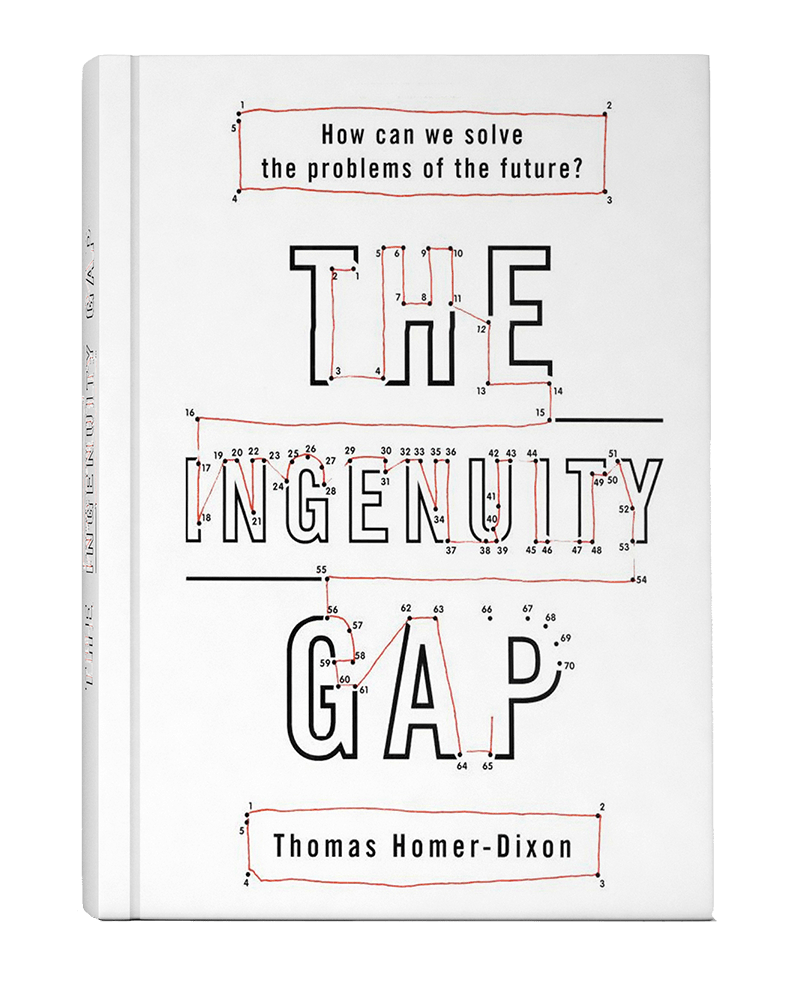Remarks at the Governor General’s Literary Awards Ceremony
Speech Transcript
What am I trying to say in The Ingenuity Gap? What are the book’s key points?
Most generally, the book argues that in many aspects of our lives we’re producing immense problems for ourselves far faster than we’re solving them. We’re embedded in a set of enormously complex, tightly interlinked systems — economic, political, technological, and ecological. We don’t really understand how these systems work, so we can’t manage them effectively. Yet as time passes, we’re making them more unstable and dangerous. The international economy flips unpredictably between order and turbulence, the planet’s climate is probably on the cusp of radically new behavior, and the dominant regime of global politics is generating huge stresses and potential for mass violence. The ghastly events of September 11 give us a glimpse of what our future will look like if we continue down this road.
But, underneath this general argument, The Ingenuity Gap is really about hubris and humility. It’s about the hubris of believing that we understand everything and can do anything; the hubris that says the West’s science, democracy, and capitalism have led us to the End of History, and that all other societies have to do to be happy is follow our path. The Ingenuity Gap is an argument for far greater humility — for recognizing how little we understand and how even less we control, and for recognizing our true relationship to the vast and incomprehensible forces swirling around us. The surest way for us to fail in the future — to fail catastrophically — is to believe that we know it all, because when we believe we know it all we lose the capacity for self-criticism and self-reflection. We no longer see the signals around us that tell us when things are going wrong.
The Ingenuity Gap doesn’t conclude with a check-list of solutions to the challenges we face. It would be a bit odd for a book that argues for greater humility to finish with a list of solutions. I simply don’t know what all the solutions are. No one does. I have a few ideas, which I offer in the book as seeds for further discussion, but these ideas are far from comprehensive.
I do know one thing, however: if we’re going to address the challenges before us in the 21st century, we need to see ourselves and the world around us in new ways. Our current ways of thinking and speaking — our prevailing languages of economics and politics — are, in many ways, making things worse. The Ingenuity Gap is a first, very preliminary step towards a new language and new concepts that can help us work together — collectively — to cope with our problems.
It is an astonishing honor to receive this award. Astonishing, because The Ingenuity Gap is not an easy book to characterize or to read. It’s an uneasy blend of treatise and story, of logic and emotion, and of fact and speculation. It’s a travelogue full of biographical details written by a staid academic — hardly a prescription for success and certainly not for a bestseller. It has 61 pages of endnotes and 3000 citations, and it’s full of graphs and charts. My American editor mentioned a rule of thumb one time — that every graph would lose us 10 thousand sales. If he were right, at this point we should be far into negative territory.
But somehow The Ingenuity Gap works. And it works in large part because of the guidance and counsel I received from many wonderful people, one of whom is here today. Louise Dennys helped me truly understand what it means to write and to be a writer. She helped me understand the texture and rhythm of words, how to make my feelings flow through language, and, most importantly, how to reach people with a story. Thank you so much Louise. And thank you to the marvelously talented people at Knopf, to my researchers, and especially to my friends and family who have, in countless ways, helped make this possible.

Event
Governor General’s Literary Awards Ceremony
Topics
Ingenuity Gap
